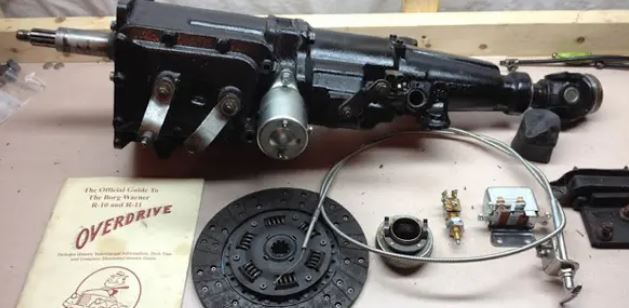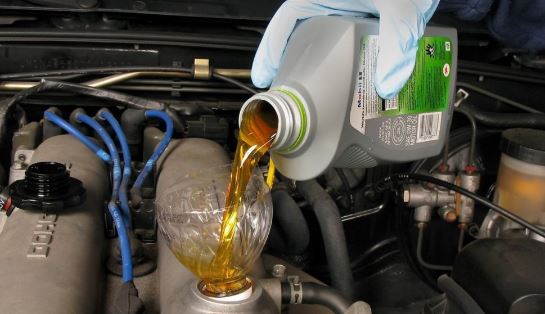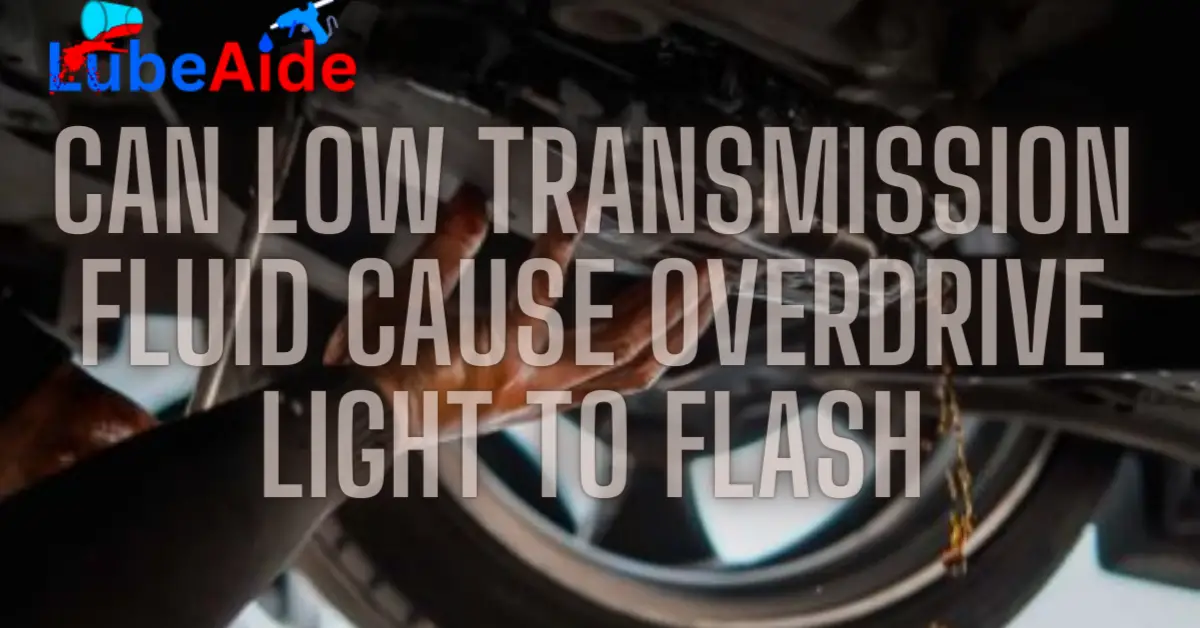Can low transmission fluid cause overdrive light to flash? As a critical component in modern vehicles, the OD function is designed to optimize fuel efficiency and engine performance. However, if you’ve noticed the OD light flashing in your vehicle, it may be an indication of a potential issue with the OD system. One possible culprit behind this warning signal is low transmission fluid levels. Transmission fluid acts as the lifeblood of the transmission system, playing a crucial role in its smooth operation.
We will look into the connection between low transmission fluid and the Overdrive system in this extensive essay, investigating if low transmission fluid may actually make the Overdrive light flash. We will discuss the functions of transmission fluid, the consequences of low transmission fluid levels, common symptoms, diagnosis and repair options, preventive measures, and address frequently asked questions. So, let’s uncover the truth and gain a deeper understanding of this issue.
Understanding Overdrive

Overdrive is a term that is often used in various contexts, but it generally refers to a state of heightened performance or activity beyond normal limits. Whether it’s in the realm of technology, automotive engineering, or personal achievement, overdrive typically denotes an accelerated pace or increased output. Here, we will explore the concept of overdrive and gain a deeper understanding of its different applications.
In the context of technology, overdrive is often associated with the processing speed of electronic devices. For example, a computer’s CPU (Central Processing Unit) or graphics card can be overclocked to operate at a higher frequency than its default settings, resulting in increased performance. Overclocking is often used by gamers or other users who require more processing power for demanding tasks, but it can also lead to higher energy consumption and increased heat generation, which may pose risks to the device’s lifespan and stability.
In the realm of automotive engineering, overdrive refers to a gear ratio in a vehicle’s transmission that allows the engine to operate at a lower RPM (Revolutions Per Minute) than the driveshaft, resulting in increased fuel efficiency and reduced wear and tear on the engine. Overdrive gears are typically used at higher speeds, such as on highways, to help the vehicle achieve better gas mileage and smoother cruising.
On a personal level, overdrive can refer to a state of heightened productivity or accomplishment. It often describes a situation where an individual is working at an accelerated pace, putting in extra effort, and achieving results beyond their usual performance levels. This can happen in various areas of life, such as work, sports, or creative endeavors. However, it’s important to note that sustained overdrive can also lead to burnout and adverse effects on physical and mental health if not managed properly.
Understanding overdrive requires careful consideration of its advantages and disadvantages. On the positive side, overdrive can increase performance, efficiency, and productivity, enabling individuals or devices to achieve outcomes beyond their usual limits. It can result in improved results, greater accomplishments, and a sense of satisfaction or fulfillment. On the other hand, overdrive can also have negative consequences, such as increased risks, potential damage, and adverse impacts on health or well-being if not moderated or controlled.
Transmission Fluid: The Lifeblood of the Transmission System
Transmission fluid, often referred to as the lifeblood of the transmission system, is a crucial component in modern automobiles. It plays a vital role in ensuring the smooth and reliable operation of the transmission, which is responsible for transferring power from the engine to the wheels.
Transmission fluid serves several critical functions within the transmission system. Firstly, it acts as a lubricant, reducing friction and wear between the various moving parts of the transmission. This is especially important as the transmission system is subjected to high temperatures and extreme pressure during operation, which can cause parts to rub against each other and generate heat. Transmission fluid helps dissipate this heat, preventing overheating and potential damage to the transmission.
Secondly, transmission fluid helps to clean and protect the transmission’s internal components. As the transmission operates, it can accumulate debris, dirt, and contaminants from the engine, clutch, and gears. Transmission fluid contains detergents and additives that help dissolve and suspend these contaminants, preventing them from depositing on critical transmission parts and causing damage.
Furthermore, transmission fluid also helps with shifting smoothness and performance. It provides the necessary hydraulic pressure to engage and disengage the gears, allowing for smooth gear changes and preventing slippage or harsh shifting. The correct viscosity and properties of transmission fluid are crucial in maintaining optimal performance and extending the transmission’s lifespan.
It’s important to note that transmission fluid requires regular maintenance to ensure its effectiveness. Over time, it can become contaminated, lose its viscosity, and break down, leading to reduced performance and potential damage to the transmission system. Regular transmission fluid changes, as recommended by the vehicle manufacturer or a qualified mechanic, are necessary to maintain the health of the transmission system.
Low Transmission Fluid: Causes and Consequences

Causes of Low Transmission Fluid:
- Leakage: One of the main causes of low transmission fluid is leakage. Transmission fluid can leak from various parts of the transmission system, including the transmission pan, seals, gaskets, and cooler lines. Leakage can be caused by wear and tear, damage to the transmission components, or faulty installation of transmission components.
- Evaporation: Over time, transmission fluid can evaporate due to heat generated by the transmission system during operation. This can cause the fluid level to drop, leading to low transmission fluid.
- Neglecting maintenance: Failure to regularly check and maintain the transmission fluid level can also result in low transmission fluid. Many vehicle owners overlook this crucial aspect of vehicle maintenance, leading to inadequate fluid levels in the transmission system.
Consequences of Low Transmission Fluid:
- Poor Shifting: Transmission fluid is essential for smooth gear changes in automatic transmissions. When the fluid level is low, it can cause poor shiftings, such as delayed or harsh gear shifts, slipping gears, or difficulty getting into gear. This can result in poor vehicle performance, reduced fuel efficiency, and increased wear and tear on the transmission components.
- Overheating: Transmission fluid also acts as a coolant for the transmission system, helping to dissipate heat generated during operation. When the fluid level is low, it can result in increased heat buildup, leading to overheating of the transmission system. Overheating can cause damage to the transmission components, including the transmission clutches, bands, and torque converter, resulting in costly repairs.
- Increased Friction and Wear: Low transmission fluid can lead to increased friction and wear on the transmission components, including the gears, bearings, and seals. Friction can cause excessive heat and wear, resulting in premature failure of the transmission components and reduced overall lifespan of the transmission system.
- Transmission Failure: If left unaddressed, low transmission fluid can eventually lead to complete transmission failure. A failed transmission can result in a vehicle that is inoperable and requires expensive repairs or replacement of the entire transmission system.
Overdrive Light Flashing: What It Means

When you see the overdrive light flashing on your vehicle’s dashboard, it typically indicates an issue with the transmission system. The overdrive light is a warning indicator that alerts you to potential problems with the overdrive function of your vehicle’s transmission.
Overdrive is an additional gear in the transmission that allows the engine to operate at lower RPMs (revolutions per minute) for better fuel efficiency during highway driving. When the overdrive light is functioning normally, it usually remains lit or turns off after you engage or disengage the overdrive function.
However, when the overdrive light starts flashing, it can indicate several potential problems, such as:
- Transmission Trouble: Flashing overdrive light could be a sign of a malfunction in the transmission system, such as slipping gears, low fluid levels, or overheating. Ignoring this warning may result in further damage to the transmission if not addressed promptly.
- Electrical Issue: A flashing overdrive light could also indicate an electrical issue, such as a faulty sensor or wiring problem, which may need to be repaired or replaced.
- Computer System Malfunction: The flashing overdrive light could also be related to a malfunction in the vehicle’s computer system, which controls the transmission. This may require diagnostic testing to identify and fix the underlying issue.
- Vehicle Safety Features: Some vehicles may have safety features that trigger the overdrive light to flash, such as when the vehicle is in limp mode or when the traction control system is engaged due to slippery road conditions. In such cases, the flashing overdrive light is a reminder to adjust your driving accordingly and avoid excessive speeds.
Symptoms of Low Transmission Fluid
- Gear Shifting Issues: One of the primary signs of low transmission fluid is difficulty in shifting gears. You may experience delayed or jerky gear shifts, or the transmission may fail to engage in a particular gear altogether. This can result in poor acceleration, decreased fuel efficiency, and a bumpy ride.
- Slipping Transmission: Low transmission fluid can cause the transmission to slip, which means it may momentarily lose power or disengage while driving. This can feel like the engine is revving without any corresponding increase in speed. It can also cause the vehicle to lurch or surge unexpectedly.
- Overheating: Transmission fluid also helps in cooling the transmission system. When the fluid level is low, it may not be able to dissipate heat properly, resulting in the transmission system overheating. Overheating can cause damage to the transmission components and may result in costly repairs if not addressed promptly.
- Burning Smell: If you notice a burning smell coming from your vehicle, it could be due to low transmission fluid. When the fluid level is low, the remaining fluid can become overheated, resulting in a burnt smell. This can be an indication of a serious transmission problem that requires immediate attention.
- Fluid Leaks: Low transmission fluid can be caused by fluid leaks. If you notice red or brown fluid pooling underneath your vehicle or dripping from the transmission, it could be a sign of a leak. It’s essential to address fluid leaks promptly as they can lead to further damage to the transmission system.
- Warning Lights: Many modern vehicles are equipped with warning lights on the dashboard indicating a transmission system problem. If you see a transmission-related warning light illuminated, it could be due to low transmission fluid. It’s crucial to have the issue diagnosed and fixed by a qualified technician.
- Unusual Noises: Low transmission fluid can cause the transmission system to produce unusual noises, such as whining, grinding, or clunking sounds. These noises can indicate that the transmission is not functioning properly and may require immediate attention.
Diagnosis and Repair of Low Transmission Fluid and Overdrive Issues
Diagnosis:
Low transmission fluid levels can occur due to leaks, evaporation, or normal wear and tear over time. Symptoms of low transmission fluid levels include slipping gears, delayed or harsh shifting, and unusual noises coming from the transmission. To diagnose this issue, a mechanic will typically check the transmission fluid level using the dipstick or through the vehicle’s onboard computer system. If the fluid level is found to be low, the mechanic will inspect the transmission for any signs of leaks and may perform additional tests to determine the cause of the low fluid level.
Overdrive issues can also be diagnosed by a mechanic through a series of tests. Overdrive is the highest gear in an automatic transmission, which allows the engine to run at a lower RPM (revolutions per minute) for improved fuel efficiency at highway speeds. If the vehicle has trouble shifting into overdrive or if it pops out of overdrive unexpectedly, it could indicate a problem with the overdrive system. The mechanic may use specialized diagnostic tools to scan for error codes and inspect the transmission for any mechanical issues.
Repair:
Once the diagnosis is confirmed, the mechanic will proceed with the necessary repairs to fix the low transmission fluid or overdrive issues.
For low transmission fluid levels, the mechanic will typically add the appropriate type and amount of transmission fluid to bring it up to the correct level. If there is a leak, the mechanic will identify the source of the leak and repair it accordingly. In some cases, damaged gaskets, seals, or hoses may need to be replaced.
For overdrive issues, the repair will depend on the specific cause of the problem. It could involve repairing or replacing a faulty solenoid, sensor, or switch that controls the overdrive function. In some cases, the transmission may need to be rebuilt or replaced if the damage is severe.
It’s worth noting that preventive maintenance is key to avoiding low transmission fluid and overdrive issues. Regularly checking the transmission fluid level and addressing any leaks promptly, as well as following the manufacturer’s recommended maintenance schedule can help prevent these problems from occurring in the first place.
Prevention and Maintenance
Prevention and maintenance are crucial aspects of ensuring the smooth and efficient operation of a vehicle’s transmission system. Regular preventive measures and maintenance practices can help avoid low transmission fluid levels, as well as prevent overdrive-related problems.
One of the key preventive measures to avoid low transmission fluid levels is to regularly check the fluid level and condition. Transmission fluid is essential for lubricating the various components of the transmission system and keeping it cool. Low fluid levels can cause the transmission to overheat and result in costly damage. Therefore, it is essential to check the transmission fluid level at least once a month or as recommended by the vehicle’s manufacturer and top it up as needed.
In addition to checking the fluid level, it is also important to inspect the condition of the transmission fluid. If the fluid appears dark, dirty or has a burnt smell, it may indicate that it needs to be replaced. Regularly replacing the transmission fluid, as recommended by the manufacturer, can help prevent low fluid levels and maintain optimal performance.
Regular maintenance practices are also critical for the overall health of the transmission system. This includes regular inspections and servicing of the transmission system components such as the transmission filter, pan gasket, and cooler lines. The transmission filter helps to remove debris and contaminants from the fluid, while the pan gasket prevents leaks. Over time, these components can become clogged or worn out, leading to decreased performance and potential damage to the transmission system. Therefore, regular inspection and replacement of these components, as recommended by the manufacturer, can prevent low fluid levels and maintain smooth operation.
Maintenance practices can also play a crucial role in preventing overdrive-related problems. Overdrive is the highest gear in the transmission system that allows for efficient fuel consumption at high speeds. However, if the transmission system is not properly maintained, overdrive-related problems such as slipping or rough shifting can occur. Regular maintenance, including fluid replacement and filter changes, can help prevent overdrive-related issues and ensure the transmission system operates smoothly.
FAQs About Can Low Transmission Fluid Cause Overdrive Light to Flash
Can low transmission fluid cause the overdrive (OD) light to flash?
Yes, low transmission fluid levels can sometimes trigger the overdrive (OD) light to flash. The OD light is an indicator on the dashboard that typically signifies an issue with the transmission system. When the transmission fluid level is too low, it can cause problems with the transmission’s operation, including issues with engaging or disengaging overdrive. As a result, the OD light may flash to alert the driver that there may be a problem with the transmission due to low fluid levels.
Why is overdrive important in a vehicle’s transmission system?
Overdrive is the highest gear in a vehicle’s transmission system that allows for more efficient fuel consumption at higher speeds. It helps the engine to operate at a lower RPM (revolutions per minute) while maintaining a higher vehicle speed, resulting in better fuel efficiency. Overdrive is typically used during highway driving or when cruising at higher speeds for extended periods.
What should I do if the overdrive light is flashing due to low transmission fluid levels?
If the overdrive light is flashing, it is important to address the issue promptly. The first step is to check the transmission fluid level using the vehicle’s dipstick, following the manufacturer’s instructions. If the fluid level is low, it should be topped up to the proper level as soon as possible. It is also crucial to investigate the cause of the low fluid level, such as leaks or other transmission issues, and address them accordingly. If the overdrive light continues to flash even after topping up the fluid, it is recommended to seek professional diagnosis and repair from a qualified mechanic.
Final Thought
In the end, based on our in-depth exploration of the topic, can low transmission fluid cause overdrive light to flash? the answer is clear. The OD function in modern vehicles relies on sufficient transmission fluid levels to operate optimally, and when these levels are low, it can result in various symptoms such as the OD light flashing as a warning signal.
Understanding the critical role of transmission fluid in the transmission system, being aware of the symptoms of low transmission fluid, and taking preventive measures such as regular maintenance and fluid level checks can help prevent OD-related issues, including the flashing of the OD light. It is essential to address low transmission fluid levels promptly and seek professional diagnosis and repair to avoid further damage and costly repairs.
Related Topics:
- Do Manual Transmissions Have Fluid
- Can Low Transmission Fluid Cause Overdrive Light to Flash
- Does Transmission Fluid Evaporate
- How to Get Transmission Fluid Out of Clothes
- Can Transmission Fluid Freeze
- Will Transmission Fluid Clean Diesel Fuel Injectors
- Can You Mix Synthetic Transmission Fluid With Regular Transmission Fluid
- Automatic Transmission High RPM Before Shifting
- Does Transmission Fluid Expire
- Can You Start an Engine Without Transmission Fluid


